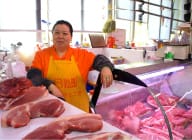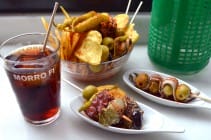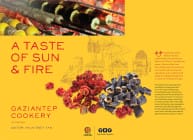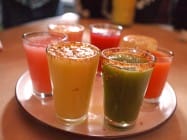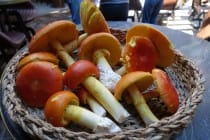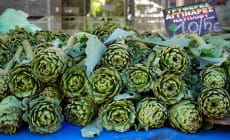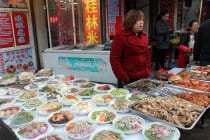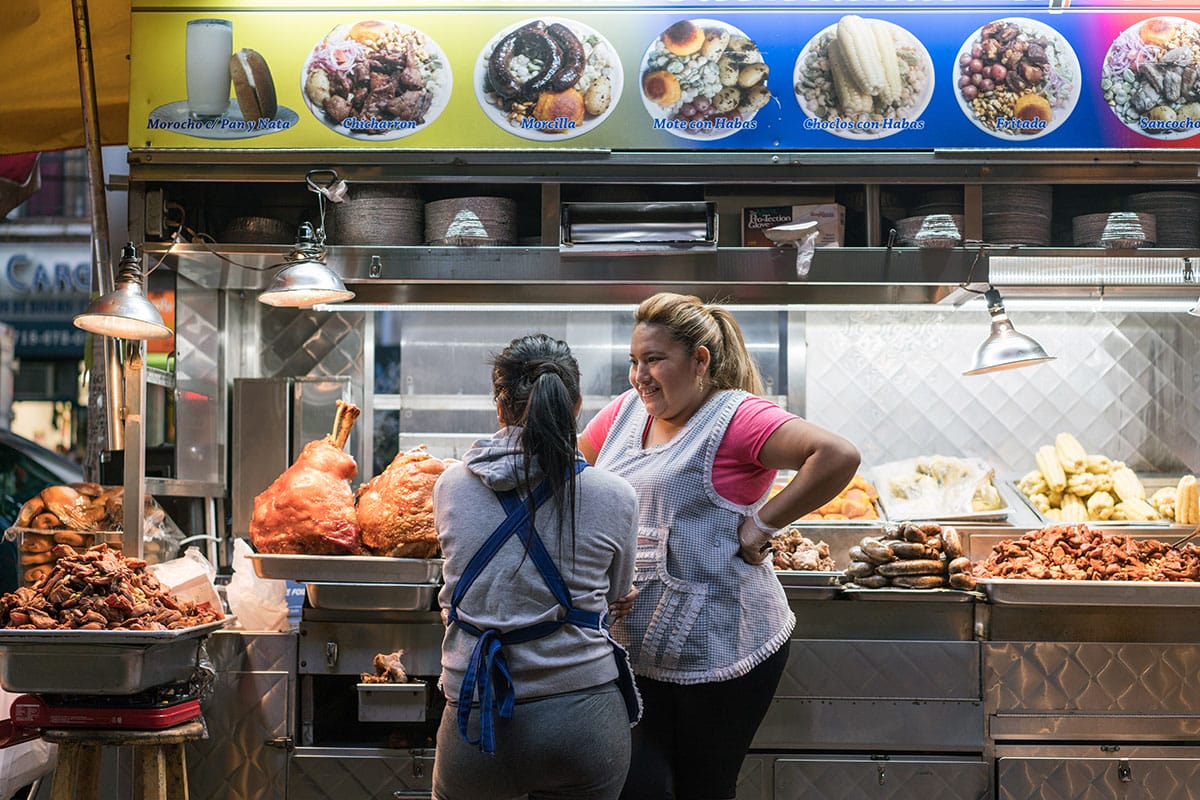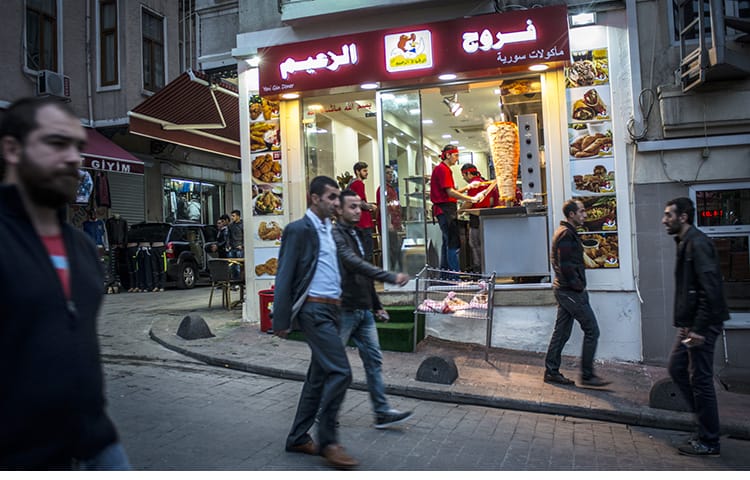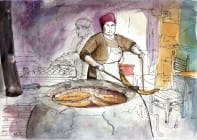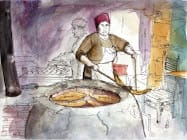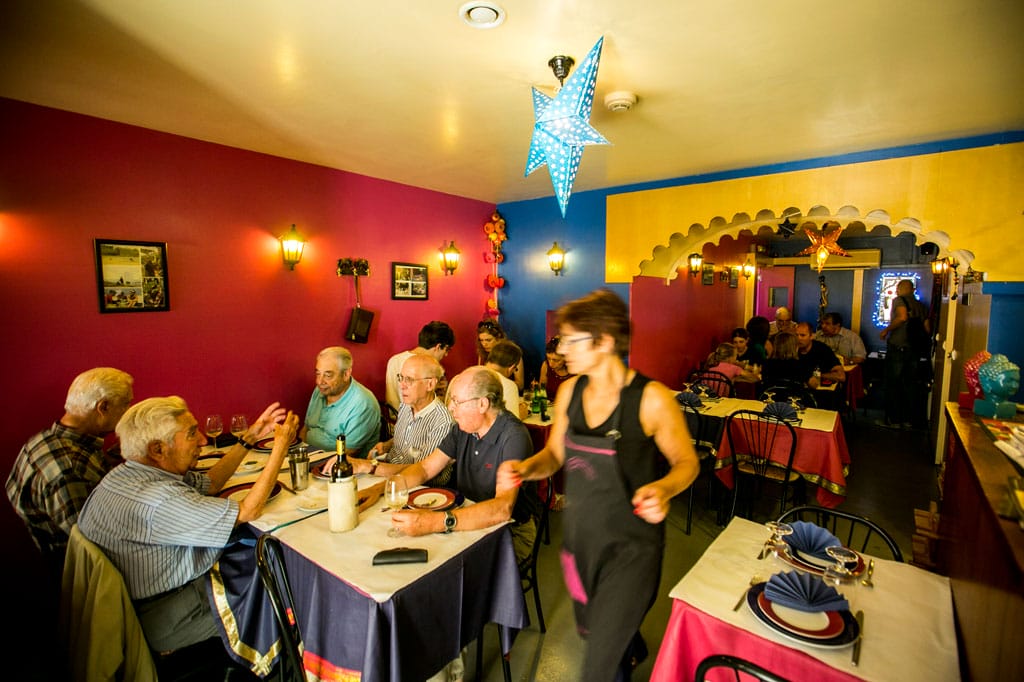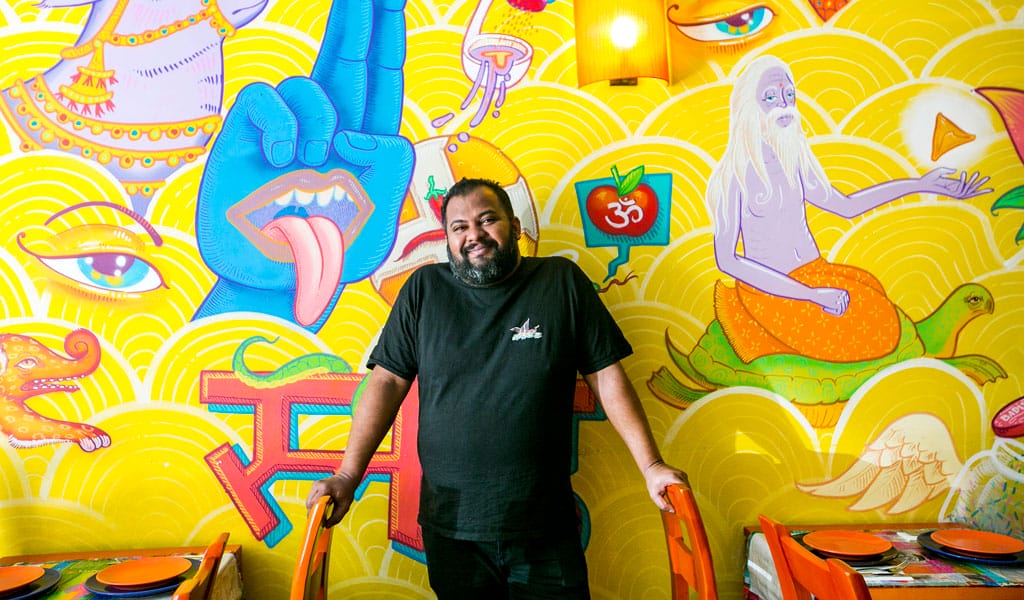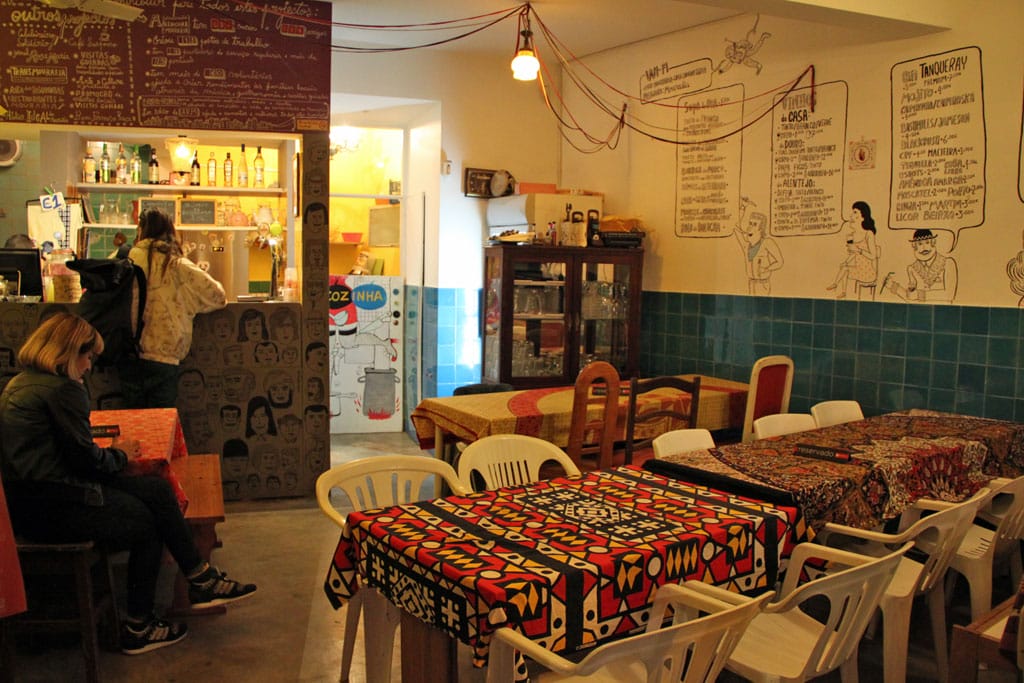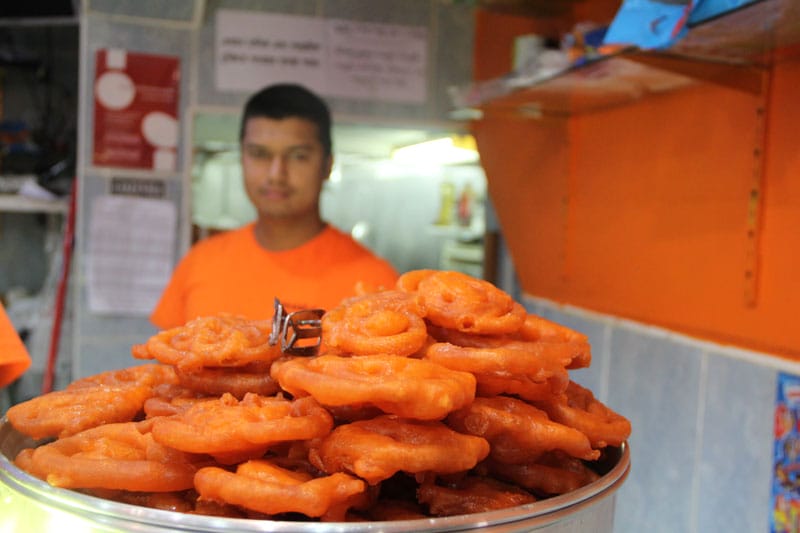Hidden within Mouraria’s maze of narrow streets is a tiny eatery offering usually hard-to-find fare in Lisbon: Goan cuisine. Situated a couple of minutes away from Martim Moniz – a revamped square that some years ago was named the multicultural core of the capital – this haven of flavors is a veteran of food diversity in the neighborhood. Tentações de Goa (“Temptations of Goa”) opened 20 years ago, when the multi-ethnic character of the area was more marginalized and not considered cosmopolitan, and when international restaurants were not as numerous and crowded as they are today.
In the 1990s Maria, the now-busy owner of the small restaurant, was just a regular customer here, an avid fan of the elderly Goan woman who originally ran the place. Nowadays, she is the one manning the stove, applying the secrets painstakingly learned from her husband, a Goan born in Mozambique who moved to Lisbon after the African country’s 1975 revolution and subsequent independence from Portugal. This connection between the former territories of the Portuguese empire is reflected in some way by the food traditions of those countries with a common Luso-colonial past – a kind of geopolitical drafting of shared pasts through ingredients and techniques. Goan cuisine is a great way to explore those histories.
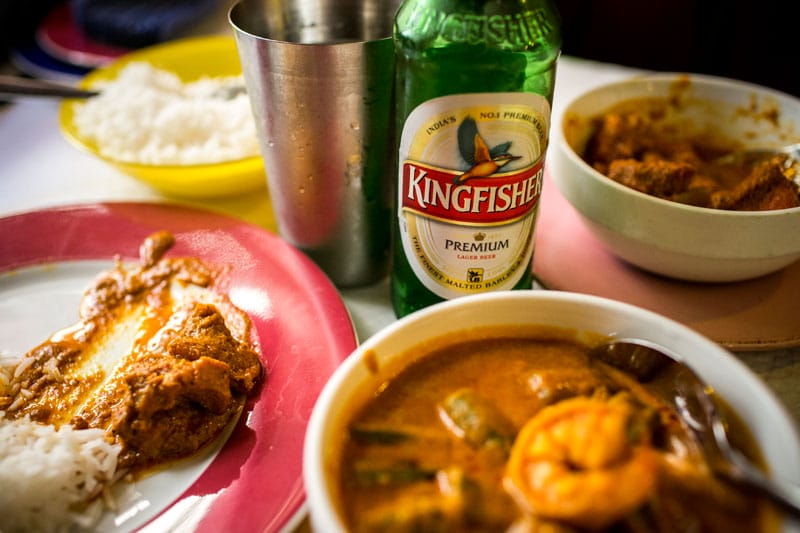
Marked by Hindu origins and centuries of European and Arab food habits because of Goa’s position on the Arabian Sea, Goan cooking is big on seafood and rice. The Portuguese empire made its biggest impression on the small southwest Indian state, bringing potatoes, tomatoes, pork meat, pineapple and cashews there in the 16th century. The Portuguese also introduced a key ingredient that would end up being a staple for the wider Indian subcontinent: the chili pepper.
Prawn curry is a good place for the uninitiated to start. Made from coconut milk, garlic, ginger, coriander and cumin, this is also a star dish on Tentações de Goa’s menu. Maria normally prepares the base for this curry in a huge pot, which will be enough for a few days’ servings. The fact that it is cooked for such a long time enhances the taste. Pork vindaloo is another speciality of the house and a Goan classic. Flavored with chillies, garlic, vinegar, tamarind and cinnamon, it is a fascinating example of the fusion of different origins, and an emblematic souvenir of the Portuguese legacy in Goa today. There is even a theory that the word “vindaloo” is a garbled pronunciation of vinha d’alho, an old Portuguese dish made of meat marinated in vinegar and garlic.
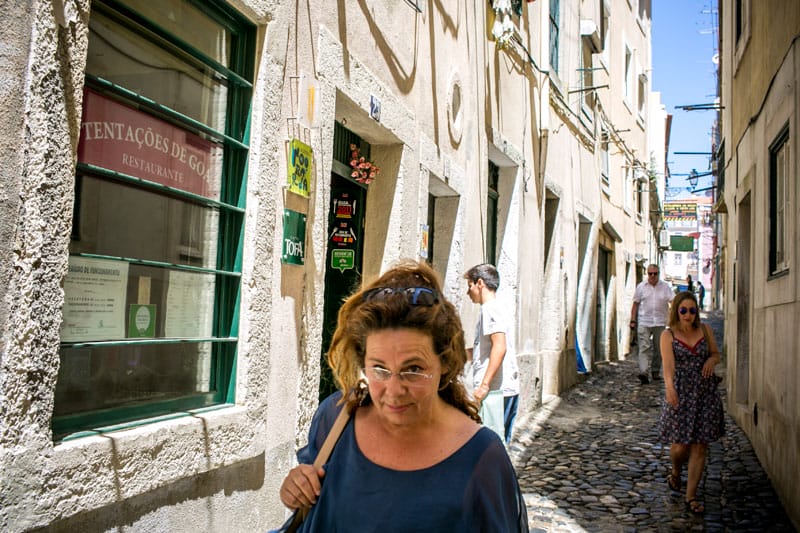
As customers can clearly deduce from the informal decoration, Maria has a strong connection with Goa. The many photographs on the wall, depicting her with friends under palm trees, and a big map of the region, which passed from Portuguese to Indian sovereignty only after 1961, reveal her strong ties to the place. “I feel more Goan than my husband,” she says. “He feels more African.”
With a loyal clientele, who flock here from other neighborhoods and even other cities in Portugal, the restaurant is also tempting more and more tourists. It’s no surprise, given that the food at this small, colorful bistro always punches above its weight. Reservations are highly recommended.
 June 15, 2019 Jesus é Goês
June 15, 2019 Jesus é Goês
Order a plate of vindalho in one of the many Goan restaurants around Lisbon and your […] Posted in Lisbon March 29, 2016 Dine Together
March 29, 2016 Dine Together
It’s a buzzing Thursday night at Associação Renovar a Mouraria (ARM), a one-room bar and […] Posted in Lisbon March 9, 2016 Dhaka Restaurante
March 9, 2016 Dhaka Restaurante
Every late morning from the ground floor of a typical Lisbon building, the façade of […] Posted in Lisbon
Published on July 28, 2016
Related stories
June 15, 2019
LisbonOrder a plate of vindalho in one of the many Goan restaurants around Lisbon and your local friend at the table may point out that the origin of this dish is, in fact, Portuguese. Even the name can be decoded back to the Portuguese vinha d’alhos (wine and garlic), he’ll say. But let’s be honest here,…
March 29, 2016
LisbonIt’s a buzzing Thursday night at Associação Renovar a Mouraria (ARM), a one-room bar and eatery found in a nook at the top of some ancient stone steps leading up from Rua da Madalena. Dani, a local tattooist born in Java, is cooking for around 35 people as part of the weekly Jantar Atravessado (“dinner…
March 9, 2016
LisbonEvery late morning from the ground floor of a typical Lisbon building, the façade of which displays a tile-painted Madonna, a hunger-inducing scent pervades the street. Dhaka Restaurante is one of many canteens in the Mouraria neighborhood preparing its lunchtime curry. Along Rua Benformoso, among the small shops selling jewelry, trinkets and Chinese-made goods, are…
















